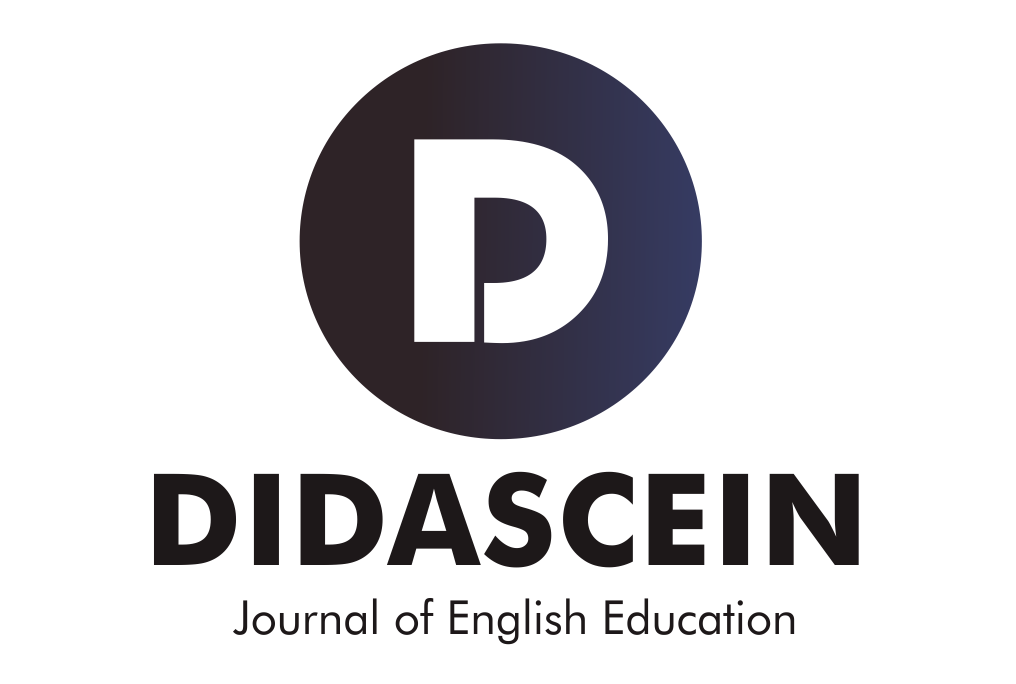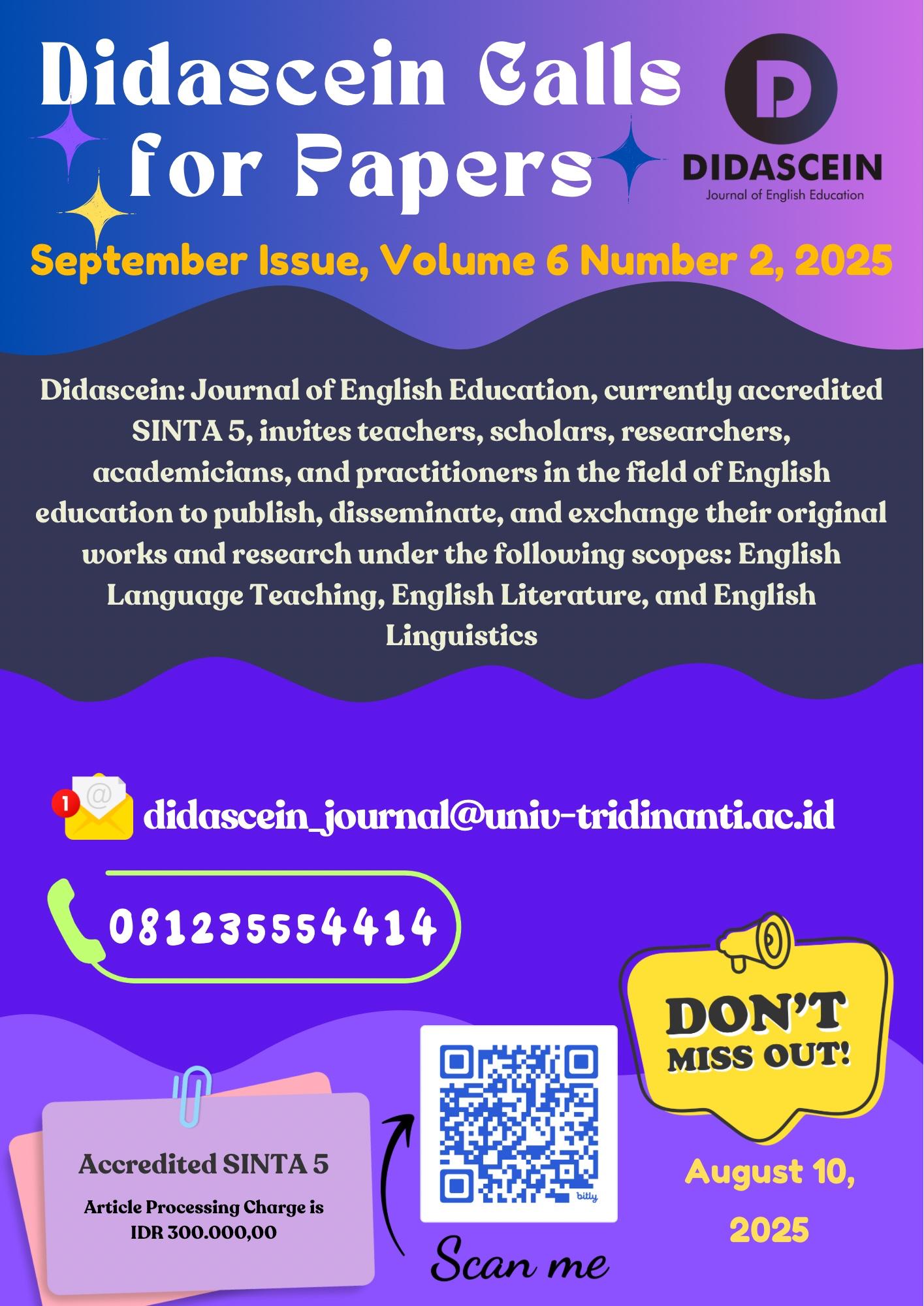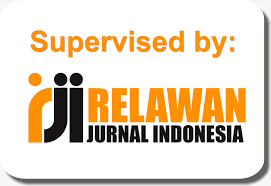DIGITAL LANGUAGE LEARNING THROUGH DUOLINGO:
A SURVEY STUDY OF TENTH-GRADERS
Keywords:
perception, English Learning, Duolingo ApplicationAbstract
The rapid development of technology, particularly in the post-COVID era, has significantly expanded individuals’ perspectives, especially in the realm of education. Technology has enabled greater access to information, and numerous advanced applications are now available to specifically support the improvement of language skills. The Duolingo application is one of the technological tools that can help students become more proficient in English, and it also supports educators by offering ways to uphold the idea of technology-assisted language learning. This study aimed to investigate students’ perceptions of using Duolingo. The population of this study consisted of tenth-grade students at SMA Swasta Sukajadi during the 2023/2024 academic year. The research sample consisted of 106 students, representing classes XA, XB, and XC at SMA Swasta Sandika Sukajadi. The research findings present the results of a descriptive analysis of students' perceptions. Five aspects of students' perceptions regarding the use of the Duolingo application in English learning. The data were collected using a questionnaire. The students’ perceptions were divided into two major categories: positive and negative perceptions. Based on the findings, it can be concluded that the use of the Duolingo application significantly enhances the effectiveness and utility of English language learning. Most students demonstrated a higher level of interest in engaging with English learning through the Duolingo application
References
Abror, K., & Setiawan, H. (2024). The relationship between the use of social media as an English learning media and students’ learning motivation of the eleventh graders. Didascein: Journal of English Education, 5(1), 18–29. https://doi.org/10.52333/djoee.v5i1.343.
Allen, Grant. (2021). Android for Absolute Beginners. New York: A press
Apuke, O. (2017). Quantitative Research Methods: A Synopsis Approach. Arabian Journal of Business and Management Review (Kuwait Chapter)., 6, 40–47. https://doi.org/10.12816/0040336
Ary, et al. (2010). Introduction to Research in Education, 8th Edition. California: Wadsworth Publishing.
Bambang Riyanto. (2014). Dasar-Dasar Pembelanjaan Perusahaan, Edisi. Keempat, Cetakan Ketujuh, BPFE Yogyakarta.
Cosenza, F. &. (2013). Design and Evaluation of survey questions. Los Angeles: SAGE Publication.
Davis, F. D. (2003). Acceptance of Information Technology. MIS Quarterly, Vol. 13(3): 319-339.
Fisher, M.H. (2011) Factors Influencing Stress, Burnout, and Retention of Secondary Teachers. Current Issues in Education, 14, 1-37.
Hasan, M., Milawati, Darodjat, Harapan, T. K., Tahrin, T., Anwari, A. M., Indra, I. M. (2021). Media Pembelajaran. Klaten: Tahta Media Group.
Jumeidi, A. & Dianti, R. (2024). Leveraging Vlog to enhance secondary school students’ speaking performance. Didascein: Journal of English Education, 5(1), 62–69. https://doi.org/10.52333/djoee.v5i1.698.
Lowther, D. L., Inan, F. A., Ross, S. M., & Strahl, J. D. (2012). Do one-to-one initiatives bridge the way to 21st century knowledge and skills?. Journal of Educational Computing Research, 46(1), 1-30.
Matra, S. D. (2020). Duolingo Applications as Vocabulary Learning Tools. 1(1), Journal of English Literature, Linguistics, and Education. Vol. 1 No. 1, February 2020, pp (46-52). Universitas Pekalongan, Pekalongan, Indonesia.
Mcleod, S. (2018). Erik Erikson's stages of psychosocial development. Retrieved July 06, 2021, from https://www.simplypsychology.org/Erik-Erikson.html
Nushi, M., & Eqbali, M. H. (2017). Duolingo: A mobile application to assist second language learning (App. Teaching English with Technology, 89-98.
Singleton, Tommie W. and Singleton, Aaron J. (2010). Fraud Auditing and Forensic Accounting Fourth Edition. United State of America: John Willey & Sons, Inc.
Sugiyono. (2017). Metode Kuantitatif, kualitatif, dan Bandung: Alfabeta, CV. Penelitian R&D. Bandung: Alfabeta, CV.
Downloads
Published
How to Cite
Issue
Section
License
Copyright (c) 2025 Reni Oktariani, Nita Ria, Jenny Elvinna Manurung, Gaya Tridinanti

This work is licensed under a Creative Commons Attribution-NonCommercial-ShareAlike 4.0 International License.







